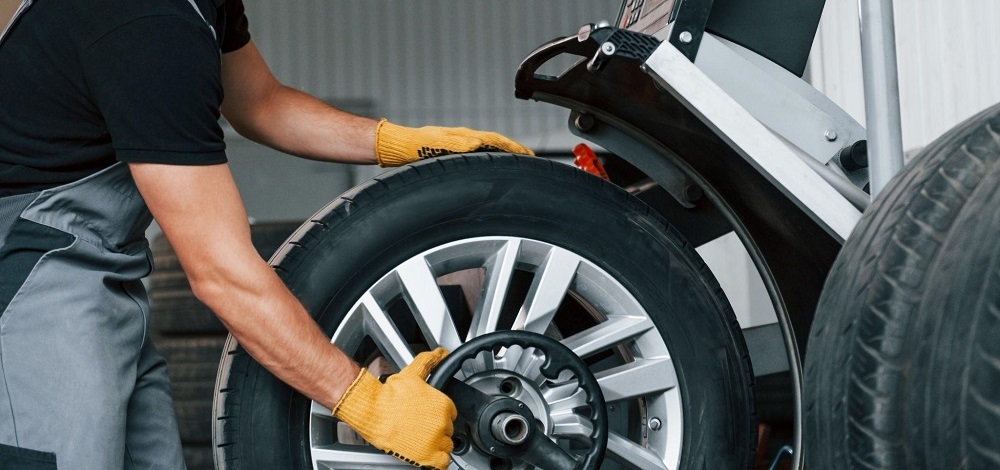Tire Tracks Morris IL: Quality Tires and Providers
Tire Tracks Morris IL: Quality Tires and Providers
Blog Article
Tire Repair Work Myths Debunked: Separating Fact From Fiction
In the realm of automotive maintenance, tire repair service holds a significant place, yet it is typically shrouded in myths and misunderstandings that can cause complication for vehicle owners. Recognizing the distinction in between reality and fiction when it comes to tire repair service is essential for making sure both safety and cost-effectiveness. From the misconceptions bordering patching versus connecting a pierced tire to the effectiveness of various tire sealants, there are a number of essential areas where clearness is needed to make enlightened decisions. Allow's clarify some common tire repair work myths and separate them from the reality to equip you with the knowledge required to browse this important facet of automobile upkeep.
Common Tire Repair Work Misconceptions
Resolving common false impressions bordering tire repair work is crucial for keeping road safety and prolonging the longevity of your car's tires. It is essential to understand that not all punctures are developed equivalent; while some may undoubtedly require a tire substitute, the bulk can be safely repaired.
Another misconception is the concept that a do it yourself tire repair work kit is an adequate service for all tire problems. While these packages can be convenient for temporary solutions in emergencies, they are not an irreversible service and may not address the underlying issue (morris tire service). Seeking the proficiency of a certified tire technician is constantly advised to ensure the security and honesty of the tire

Can You Fix a Punctured Tire?
Fixing a pierced tire is a typical method in the automotive sector, often performed by expert specialists complying with details standards and requirements. Not all punctures can be repaired. The location, size, and intensity of the leak are critical variables in determining if a tire is repairable. Punctures located on the walk area of the tire are usually repairable as lengthy as they use this link are within a certain dimension restriction and do not influence the tire's architectural integrity.
It is essential to note that penetrates near the sidewall or shoulder of the tire are generally not repairable as a result of safety and security worries. Such locations go through considerable tension and flexing, making repair services unreliable and possibly dangerous. Furthermore, if you could try here the slit is as well big, surpassing the suggested repairable size, or if the tire shows indications of interior damage, it is safer to replace the tire completely.
The Reality Regarding Patching Vs. Connecting
When considering the fixing of a pierced tire, recognizing the distinctions between patching and connecting is important for making informed decisions pertaining to tire maintenance and safety and security. Patching includes fixing the tire from the within, where a patch is applied to cover the slit. This method is thought about even more trustworthy and resilient as it resolves the damages inside, minimizing the threat of air leak and further tire damage. On the other hand, connecting is a fast fix that involves placing a rubber plug right into the pierced location from the outside. While connecting is practical and can be done without getting rid of the tire from the edge, it is normally thought about a temporary solution and may not offer the same degree of resilience as a spot.
Myth: All Tire Sealers Work

When choosing a tire sealant, consider factors such as the dimension of leaks it can efficiently fix, compatibility with tire stress surveillance systems (TPMS), and whether it is secure for Continue the tire material. Checking out reviews and looking for referrals from professionals can help you make a notified choice. Furthermore, regular upkeep and prompt replacement of sealer can help make certain ideal efficiency. Remember, while tire sealants can be helpful in emergency situations, they are not a replacement for correct tire care and maintenance.
Finest Practices for Handling Flat Tires
In light of the differing effectiveness of tire sealers, comprehending finest practices for taking care of level tires is essential for maintaining roadway security and lorry efficiency. Loosen up the lug nuts, raise the automobile with the jack, remove the lug nuts and level tire, and replace it with the extra tire. Store away the level tire, devices, and equipment, and keep in mind to check the extra tire's stress periodically.
Conclusion
In conclusion, it is very important to separate truth from fiction when it concerns tire repair work myths. Comprehending the fact about patching vs. plugging, the efficiency of tire sealers, and finest practices for taking care of blowouts can help ensure the security and durability of your tires. By exposing typical misunderstandings and complying with correct repair work standards, you can make informed decisions when it comes to keeping the health of your car's tires.
Report this page